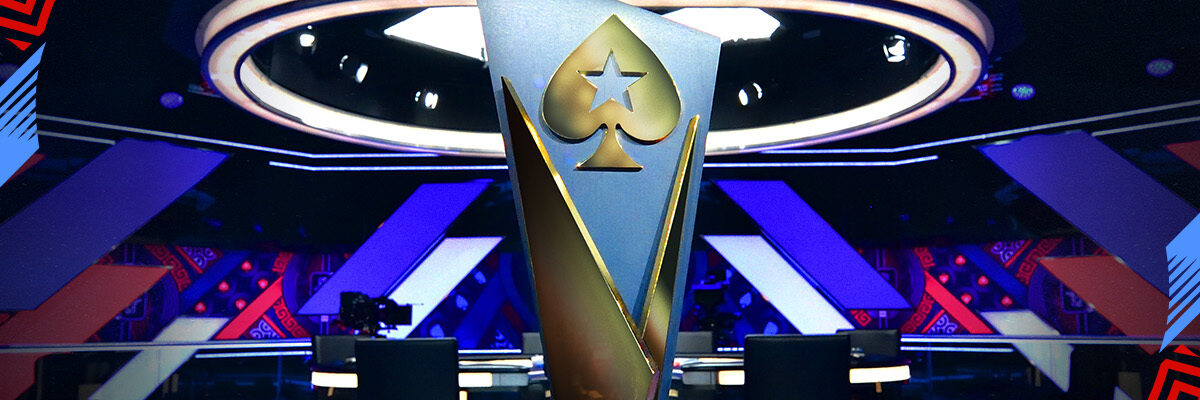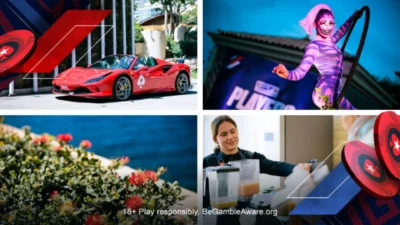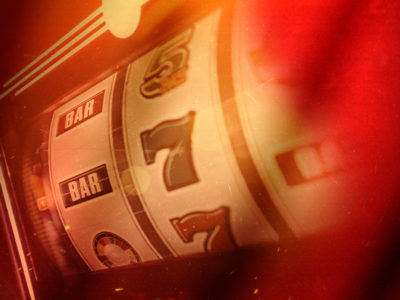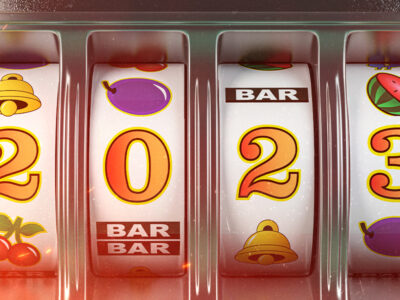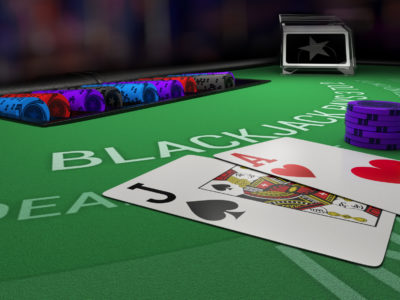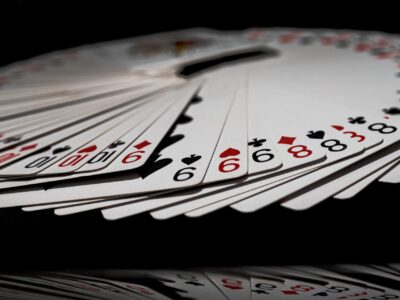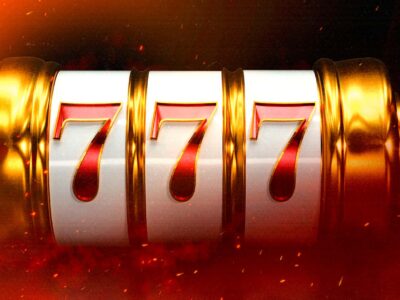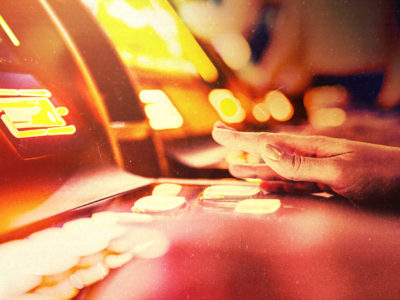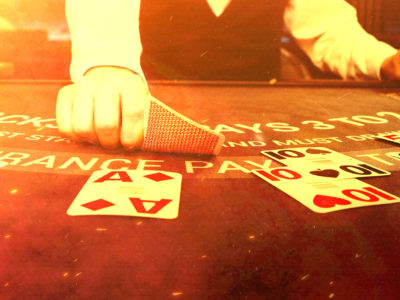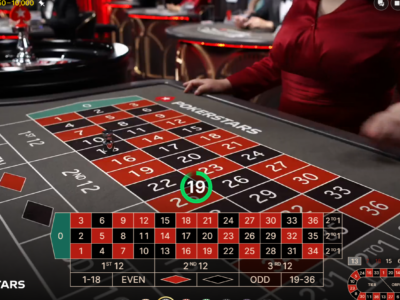Table of Contents
Updated: August 20, 2024
The European Poker Tour (EPT) has been to 26 cities during its first two decades, but only one has featured every single year. No prizes for naming Barcelona as that most favoured destination: it’s where the whole thing started back in 2004, and where the 20th anniversary celebrations kick off at the end of this month.
But what’s so good about Barcelona? Why does the EPT keep coming back?
The simple answer is that everybody who goes there loves it, so you’d be better off asking any of the several thousand people who visit EPT Barcelona every year. The slightly longer answer is that this is the city that has absolutely everything any poker player or any tourist (or any poker-playing tourist) could possibly want.
Here’s where we take a look at all those things, and give you some ideas of what to look out for on your trip to Catalonia.
WHAT’S SO GREAT ABOUT BARCELONA?
In short, everything any tourist could possible want in a city can be found in Barcelona.
If you want a hectic city break, filled with culture, gastronomy and nightlife, Barcelona has tons of that. Want to while away the hours in a luxurious five-star property, Barcelona has some of the best hotels in the world.
If you have kids and want to keep them entertained at museums, parks or on the beach, Barcelona has all of that. Because, yes, the beach. If you want to worship the sun on golden sand, skipping occasionally into the perfect blue waters of the Mediterranean, Barcelona can offer that too.
Barcelona is also incredibly easy to get to, with direct flights from every major city in Europe, as well as numerous transatlantic routes. The airport is only a short taxi ride from the centre of the city, while there are also good public transport connections. The city is super easy to navigate thanks to its subway system.
Barcelona has consistently ranked in the top five city-break destinations for decades, and its choice as the poker players’ favourite spot is not a surprise at all.
WHERE TO STAY IN BARCELONA
Casino Barcelona is based in the Port Olimpique region of the city, an area redeveloped ahead of the Olympic Games in 1992. It’s adjoined to the 5-star Hotel Arts, one of Barcelona’s most luxurious hotels, where most PokerStars qualifiers will also get to stay.
Other hotels in the immediate vicinity include the Sofitel Barcelona Skipper (formerly the Pullman Skipper), which is a three-minute walk to the casino, and the H10 Marina, about 10 minutes away, with many other players and staff staying in these hotels too.
Other options
Of course, they are not the only options. Barcelona is a very well established tourist destination, with literally hundreds of hotel and apartment rental options to suit every budget. You can snag a bed in a hostel dorm for as little as €20 per night, while you might be looking upwards of €500 per night in some of the most swanky establishments.
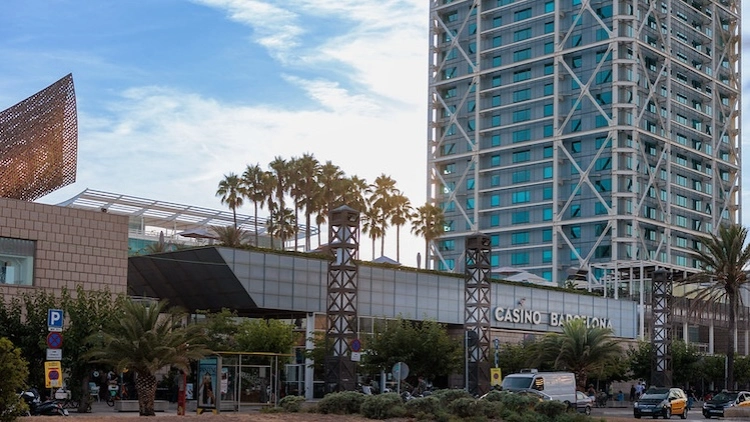
Trip Advisor ranks Seventy Barcelona, as the best value of 2,169 places to stay in Barcelona, with the Michelin judges in broad agreement. The hotel received one of only 5,000 Michelin Keys awarded to hotels worldwide in 2024, underlining the hotel’s “commitment to quality, sustainability, and the unique experience of our guests” (even if the hotel does say so itself). To be honest, it does look like a top spot — and only an hour’s walk (or 18 minute taxi ride) from Casino Barcelona.
The Serras Hotel still gets exceptional reviews and is consistently named the best Boutique Hotel in the city, perhaps only let down by its eye-watering price. You get what you pay for, though, and it is located in the attractive Gothic Quarter, which is long established as one of the best areas to stay in the city. It’s right on the water, but also only a short walk from the most bustling city areas.
Meanwhile, the Yurbban Trafalgar is a mid-price hotel that nonetheless consistently receives top reviews, with visitors particularly relishing its rooftop swimming pool and panoramic views across the city. It’s only a couple of blocks from the Plaça de Catalunya, the de facto centre of Barcelona.
If you fancy more of a hipster/arty vibe, try any hotels in the Poblenou district. This is the neighbourhood common to any up and coming city where old vacant warehouses have been transformed into boutique hotels, artisan delis and craft breweries. The hipster hotel chain Hoxton has a property in Poblenou. It opened a few years ago, but is going strong.
The entire Sant Marti district of Barcelona also has numerous hotels, all of which are slightly better priced than anything further west and into the city centre. There’s a Hotel 4, a Holiday Inn Express, a Four Points by Sheraton, and a couple of Ibis hotels. This is also a great spot to find food and entertainment.
WHAT TO SEE IN BARCELONA
Gaudi’s world
One name features more prominently than any other when discussing Barcelona: Antoni Gaudi, the peerless modernist architect from Catalonia who placed his iconic mark on this city like few others have ever managed.
Gaudi died in a road accident on a day off in 1926, leaving his masterpiece the Sagrada Familia unfinished. Despite under seemingly permanent construction ever since, this extraordinary cathedral is a UNESCO World Heritage Site and the number one visitor attraction in the city. It is apparently expected to be “completed” in 2026, even if work on sculptures, decorative details and a main entrance is expected to continue until 2034.
It’s probably better just to expect a few cranes and some scruffy masonry, at least until the EPT is 100.
You can take Gaudi-themed guided tours of Barcelona, or plot one of your own, and visit numerous locations all designed by this iconoclast.
Other top Gaudi sites include: the hilltop Parc Güell, one of his early masterpieces Palau Güell, the private residence Casa Mila and the Gaudi House Museum, which brings everything together and contextualises Gaudi’s genius.

One day Sagrada Familia will be finished
An authentic foodie haven
The teeming La Rambla is still the most famous street in Barcelona, even though the crowds can make it uncomfortable. However, it’s still worth pushing through the throngs to visit Mercat de la Boqueria, the largest food market in this city of gastronomes, with more than 300 stalls selling some truly outstanding delicacies.
Housed on the site of a former monastery, the market dates from the 13th century. It’s gone significantly upmarket since then, but still boasts an incredible array of food and drink that still feels every bit as lively and authentic as in the days when every restauranteur in the city would stop off there before opening for the day.

There are more than 300 stalls to choose from
Scale the city mountain
Barcelona is now a vast urban sprawl, reaching both the mountains and the ocean, but it wasn’t always like this. It all started, as do many cities, atop a small hill.
That hill is known as Montjuïc (literal translation: Jewish mountain) and is now one of the most beautiful places to visit in Barcelona, both to sample that ancient history and to get a view across what Barcelona has become.
Barcelona’s Olympic Stadium and swimming centre is perched on the Montjuïc (there’s no better located sports complex in the world) and it’s also fun taking the cable car up or down.

One of the most dramatic locations for a diving pool
A peek behind the scenes at FC Barcelona
The capital of Catalonia has two top-flight soccer teams, but only one actually bears the name of the city. FC Barcelona, or Barça, are one of Europe’s most successful and popular teams, winners of the Champions League on five occasions and domestic champions 27 times.
Normally, Barça play at Camp Nou, among the world’s most revered stadiums, but in keeping with the construction theme across the city, the stadium is currently undergoing renovations. Matches for the 2024/25 season will take place at Estadi Olímpic Lluís Companys, home of city rivals Espanyol.
Despite the team’s relocation, the New Barça Museum is open close to Camp Nou, and that’s well worth a visit for sports fans and casual observers alike. Barça have a rich history and the museum fills you in on all of it, leaving all guests seeing the team’s iconic blue and red colours in their dreams for weeks to come.
There’s all manner of exciting Barcelona-related activities, including glimpses of trophies and memorabilia, VR tours and the chance to beat the so-called Robokeeper in a penalty shootout, a better-than-human shot-stopper. Rumour has it that the Portuguese superstar Ronaldo couldn’t score a penalty past this better-than-human shot-stopper, though that may just be the kind of story Barcelona fans like to propagate about the ex-Real Madrid star.
If you’re so inclined, you should also try to snag a ticket for a match while you’re in Barcelona. Don’t make the mistake of assuming the games will be sold out. Barcelona attract a big crowd but there are also often tickets available, particularly since the move to the alternative stadium.
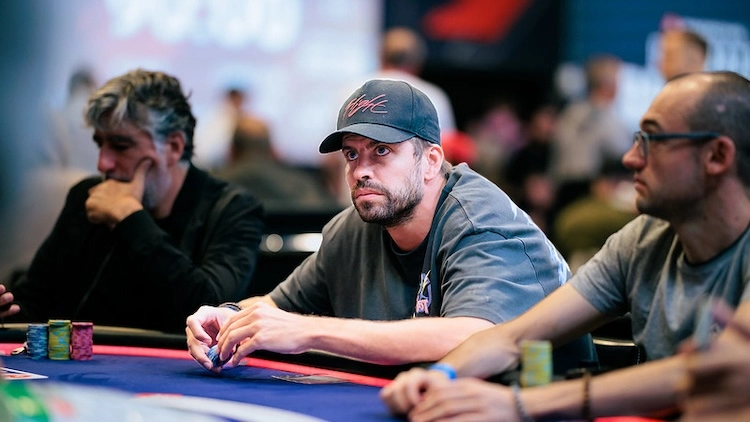
Ex-Barcelona player Gerard Pique is now a regular at the poker tables
WHERE TO EAT IN BARCELONA
You would expect a city of Barcelona’s size and diversity to have restaurants to suit every budget, taste and dietary requirements — and you’d be right. There are literally hundreds of places to eat in the city, from tiny hole-in-the-wall joints, through street food vendors, to high-end, Michelin starred establishments.
You’ll learn far more from most restaurant websites about the options than we could hope to offer, but but here are a couple of quick tips.
— Check out a site called EatWith.com, which offers visitors the chance to meet local chefs and have them cook specifically for you. EatWith events are not usually hosted in restaurants, per se. It’s more of an intimate dining experience where the chef is much more involved than just an aloof, invisible kitchen presence. There are numerous EatWith chefs in Barcelona.
— Many of the most basic-seeming bars in Barcelona will also have tapas menus, and their fare is often delicious. It’s a rare treat to be able to order restaurant-quality food while sitting in a family-style bar, so look out for small plates of patatas bravas (cubed fried potatoes with tomato sauce), empanadas (small parcels of meat, cheese or vegetables), or croquetas (fried balls of cheese or ham, coated in breadcrumbs).
— The Spanish eat late. If you head to a restaurant for what the British or the Americans might consider an early dinner, you’re more likely to see the locals just finishing off their lunch rather then eating an evening meal. It’s typical for people to eat after 9pm, which is good news for poker players at least.
WHERE TO UNWIND IN BARCELONA
Barcelona regularly features in National Geographic magazine’s list of Best Beach Cities in the World and it stands to reason that if you want to unwind, you should head to the beach.
Expanded ahead of the 1992 Olympic Games, Barceloneta Beach is over one kilometre long and is a great place for sunbathing, swimming or playing sports. There’s plenty of room for all. It also happens to be just outside the casino, so if you are in Barcelona for poker, it barely requires any additional effort to find a spot to take it easy.
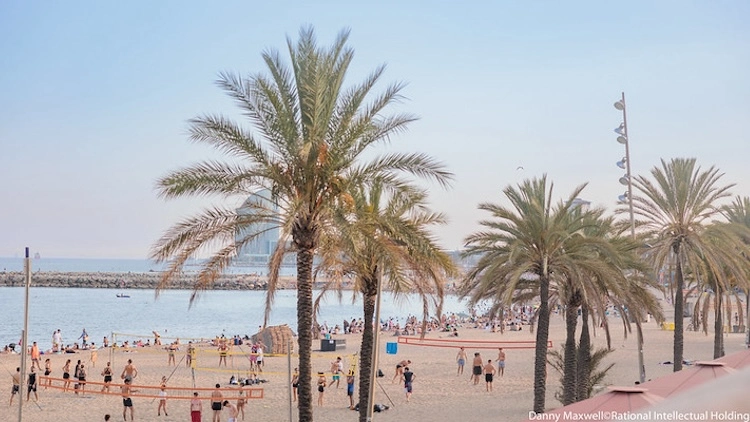
Barcelona’s nightlife is also phenomenal, and there are numerous outstanding bars and clubs to visit to let off some steam. The PokerStars Player party this year takes place in the Go Beach Club, a new venue for the EPT party, but one that looks set to become very popular. It’s a little way up the coast (transportation is provided), but with DJ headliners Kiko Rivera, Christoph and Willy William, it’s certain to be a hit.
There’s no reason why you shouldn’t spread your wings even further as well.
The most recent advice from Time Out is to head to Sala Toro, in the upcoming Sants neighbourhood of Barcelona, which is where the newest experimental music is being played. It’s too cool even to have a website, according to travel blogger Julie Abroad.
The same site recommends La Paloma for a vintage dance-hall experience, or the rock club Magic.
GETTING THERE
AIR: Most overseas visitors will fly to Barcelona, landing at the city’s modern El-Prat airport (BCN). All major European carriers, both low cost and full fare operators, fly direct to Barcelona and the airport is as well appointed as any in the world.
A taxi from the airport to Casino Barcelona or one of its nearby hotels will cost somewhere in the €30-€40 range. PokerStars Travel can sort out a transfer for a similar price.
From the airport
METRO: Barcelona Airport is also on the city’s Metro, with both Terminal 1 and Terminal 2 on the orange L9 (south) line. You’ll likely need to change trains a couple of times to get close to the casino.
Suggested routes:
Airport –> Torrassa (L1) –> Urquinaona (L4) –> Vila Olimpica
Airport –> Collblanc (L5) –> Verdaguer (L4) –> Vila Olimpica
CLICK FOR BARCELONA METRO MAP (pdf)
It costs €5.50 and takes about 30 minutes. Trains run every 30 minutes.
OVERGROUND: There’s also an overground train station, called Aeropurerto, on the city’s RENFE network. You’ll need to catch the R2 Nord train to and from the airport, which stops at Estació Sants, Passeig de Gràcia and El Clot, all in the centre of the city and with Metro stations. A ticket is €5.50. NOTE: Only the R2 Nord train goes to the airport. Confusingly, there’s also an R2 train, which doesn’t. Look for the Nord!
The station is at Terminal 2, so you’ll need to use the free shuttle service to transfer between terminals if your flight takes off or lands in T1.
Getting around
BUS: There is also a bus service that runs from both Terminal 1 and Terminal 2 into the centre of Barcelona — named Aerobus A1 and A2. It takes around 35 minutes to get to Plaça Catalunya, in the centre of the city, and costs €9.75 for a one way ticket, and €14.65 return. You can buy your ticket online or from a machine in the airport terminal. You can also buy on the bus itself.
These buses run from 05:00 through 12:30.
The NIGHT BUS runs from 21:55 through 04:45. Look for N17 to take you from Terminal 1 to the city centre; N16 from Terminal 2 to the city centre and N18 as a back-up, running from both T1 and T2.
Many people arrange a bus transfer to and from Barcelona Airport. There are two options: a bus that drops passengers at designated drop-off points in the city, or a door-to-door service, which costs a little more. You can book both on the TouristActive website.
The Barcelona.com website has a highly informative page with all transportation information, including maps and videos for how to find the bus stops.
UBER: Uber is now in Barcelona, linked to the city’s original taxi system. But you should be able to use your app as normal.
If you don’t like flying, there are a couple of other options to get to the city:
TRAIN: It’s possible to get to Barcelona by train, with direct services into the city from Madrid, Paris and Lyon, among others.
BUS: If bus travel is your thing, then Barcelona is reachable on direct services from plenty of places, including London and Amsterdam — both of which usually go via Paris. You’re looking at a journey of more than 24 hours, but it’s cheaper, more environmentally friendly and affords some decent views (especially if you enjoy French motorways). All of Eurolines, BlaBlaBus and Flixbus offer services, and a website like Omio is good to compare them all.
AND WHAT ABOUT THE POKER?
As stated, Barcelona the place where the EPT started. And it’s the only destination that has featured on every season of the tour. It’s invariably the busiest of all EPT stops. And it’s usually the first choice among poker players when they’re asked to name their favourite city to play poker.
Barcelona is also the place where reporters write the adjectival phrase “record-breaking” several times every day.
There are simply too many high points to mention from our 19 years coming to Barcelona, but if we had to whittle the list down to just five, how about these:
Alex Stevic becomes first EPT champion
Nobody really knew if the idea of a pan-European poker tour could work until John Duthie brought his crew to Barcelona in September 2004 and it became immediately clear that this would be a hit.
The excitement levels were off the charts as the mild-mannered Swede Alexander Stevic beat a field of 229 players to an €80,000 first prize. The EPT was off and running and never looked back.
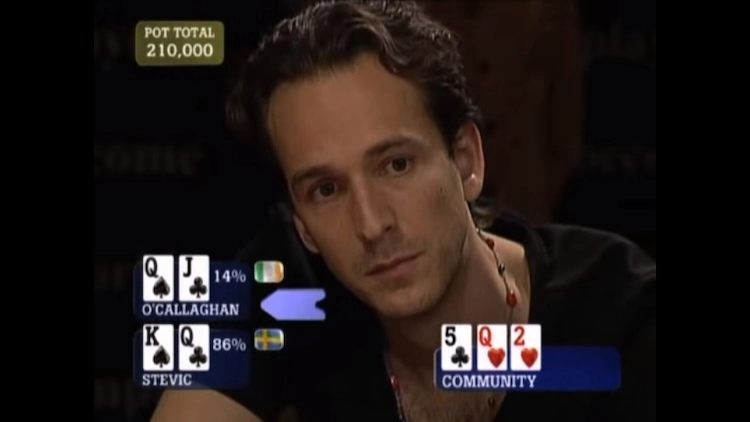
The EPT’s first champion, Alexander Stevic
Room-mates square off for the title
Mark Teltscher was already an EPT champion when he headed to Barcelona in August 2007 and offered to share a room at the venue hotel with his friend Sander Lyloff. The pair were still staring at each other a few days later — this time across the final table, where they were the only two players left.
Lyloff’s preferred game is backgammon, but he showed immediate adeptness at poker as he managed to beat even his friend Teltscher to take this one down. Remarkably, Teltscher and Lyloff were not even the only pair of hotel room-mates to go heads up for an EPT title. Brandon Schaeffer and Carl Olsen had done the same in Deauville a few years before.
Pobal downs drunken Finns to set up later double
In August 2012, the three-handed conclusion of the characteristically enormous Main Event took a turn for the boozy when Finnish pair Joni Jouhkimainen and Ilari Sahamies returned somewhat refreshed from their dinner break. They were also wearing sequinned hats, in gold and silver, that they traded depending on who was sitting first or second in the chip counts.
While it was clear to all that it wasn’t just orange juice in their glasses, the third player at the table, Mikalai Pobal, opted not to indulge. And not long after, he’d knocked them both out to win the title for Belarus. Flash forward another seven-and-a-half years and Pobal managed to win another EPT title in Prague, becoming only the second player to do the double.
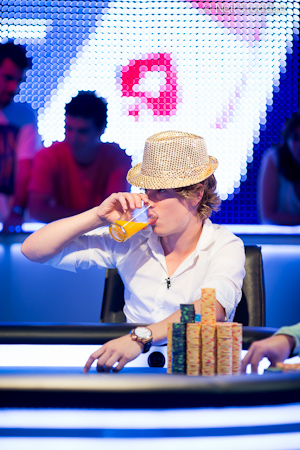
Jouhkimainen, spangly hat and orange drink
EPT hits 100 back where it all began
It was a happy coincidence that the EPT brought up its century in the same venue where everything started. The 100th EPT took place back in Barcelona in August 2014 — and the 1,496 entries played out an epic that went late, late, late into the night.
Eventually, Germany’s Andre Lettau downed future winner Hossein Ensan in third and American Sam Phillips in second to seal the title. This was the final table to launch a thousand memes as well. “It’s always coming seven!” Etc., etc.
Biggest ever EPT field celebrate return to live action
After the Covid-19 pandemic interrupted everything for a couple of years — live poker included — players celebrated the return to action by assembling the biggest field in EPT history.
There were 2,294 entries and an €11.1 million prize pool, with players coming from 78 countries (also a record). Giuliano Bendinelli capped a sensational week with an incredible comeback from just one big blind, winning the tournament and €1.5 million.
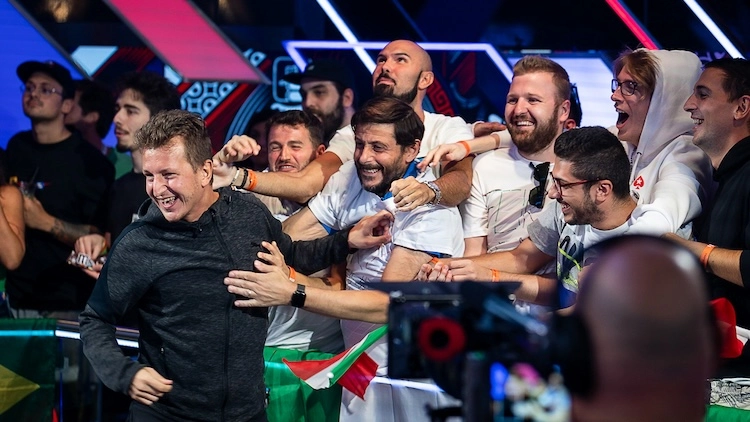
Bendinelli won the biggest EPT yet
More about EPT Barcelona
EPT Barcelona information hub
All Blog reports
Official EPT site
View Other Blogs

